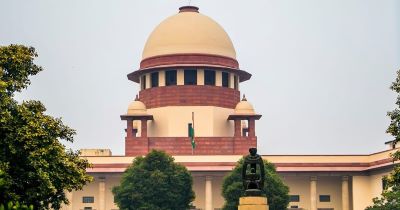Context
The recent verdict by the Supreme Court of India extending constitutional rights to address the adverse effects of climate change signifies a glimmer of hope amid a daunting ecological crisis. With global temperatures on track to exceed 1.5°C, the repercussions are dire, yet governmental responses have been inadequate. The Court’s acknowledgment of climate change’s disproportionate impact on marginalized communities presents an opportunity for corrective action. However, while the judgment holds promise, it also contains critical flaws that may hinder its effectiveness in addressing the climate crisis.
The Potential of the Verdict
The Supreme Court’s recognition of the right to be free from the impacts of climate change offers a potential pathway to mitigate and adapt to its consequences. By extending constitutional protections to encompass environmental concerns, particularly those affecting vulnerable populations, the Court underscores the urgency of addressing climate change. Moreover, its emphasis on renewable energy as essential for meeting climate commitments reflects a commitment to sustainable development. The judgment’s focus on balancing renewable energy goals with environmental conservation indicates a holistic approach to addressing the climate crisis.
Furthermore, by highlighting the adverse effects of climate change on marginalized communities, the Court lays the groundwork for inclusive and equitable climate action. The recognition of environmental rights as fundamental human rights underscores the interconnectedness of environmental protection and social justice. This holistic understanding of climate change as a multifaceted issue requiring comprehensive solutions is a step in the right direction.
Flaws in the Verdict
Despite its potential, the judgment is not without flaws that may undermine its effectiveness in tackling the climate crisis. One significant flaw lies in the Court’s acceptance of large-scale hydropower and nuclear energy as part of India’s renewable energy portfolio. Both hydropower and nuclear energy have substantial environmental and social impacts, including habitat destruction, displacement of communities, and long-term risks associated with nuclear waste. Failing to critically assess these impacts undermines the goal of achieving a clean and sustainable energy transition.
Moreover, the Court's reliance on mega-solar and wind projects overlooks their detrimental effects on local ecosystems and communities. Projects such as the Pavagada Solar Park in Karnataka and the proposed solar project in Ladakh threaten biodiversity and livelihoods, highlighting the inadequacy of current environmental impact assessment procedures. By excluding these projects from rigorous evaluation, the Court fails to address the full extent of their environmental and social consequences.
Alternative Approaches
A more effective approach would involve considering alternative energy sources and decentralized energy solutions that minimize environmental and social harm. Rooftop solar and other decentralized renewable energy initiatives have the potential to meet energy needs while reducing reliance on large-scale projects with adverse impacts. Additionally, prioritizing energy efficiency and demand management can minimize the need for new energy production, particularly in luxury consumption sectors. By exploring these alternatives, the Court can promote a more sustainable and equitable energy transition.
Furthermore, the Court could draw upon international legal frameworks and indigenous rights movements to inform its climate jurisprudence. Recognizing the rights of nature and indigenous peoples can provide valuable guidance for addressing climate change while upholding human rights and environmental justice. By incorporating these perspectives into its mandate, the Court can broaden its understanding of climate rights and promote more holistic and inclusive approaches to climate action.
Challenges to India's Development Model
Beyond the specific flaws in the judgment, broader systemic challenges persist in India’s development model, which prioritizes industrialization and infrastructure projects over environmental conservation and social justice. The Court’s recognition of indigenous rights and the importance of traditional livelihoods highlights the disconnect between development priorities and constitutional obligations. Mega-projects that threaten biodiversity and indigenous communities demonstrate a failure to uphold constitutional rights and environmental principles.
To truly address the climate crisis, the Court must confront the underlying issues inherent in India’s development paradigm. By challenging projects that prioritize economic growth over environmental sustainability and social justice, the Court can catalyze a shift towards a more equitable and sustainable development model. This requires a reevaluation of infrastructure projects that perpetuate environmental degradation and social inequities, in line with the Court’s mandate to protect fundamental rights.
Conclusion
While the Supreme Court’s verdict on climate change represents a significant step towards addressing the ecological crisis, it is not without its limitations. The judgment’s emphasis on renewable energy and environmental rights holds promise for mitigating climate change’s impacts, particularly on marginalized communities. However, flaws in the judgment, such as the acceptance of environmentally harmful energy sources and the neglect of decentralized alternatives, pose significant challenges to its effectiveness.
Moving forward, the Court must broaden its approach to encompass alternative energy solutions and indigenous rights, drawing upon international legal frameworks and grassroots movements for guidance. By doing so, the Court can leverage its mandate to protect fundamental rights and promote a more sustainable and equitable approach to addressing climate change. Only through a holistic understanding of climate justice can the Court fulfill its role in safeguarding the environment and upholding constitutional principles.
|
Probable Questions for UPSC Mains Exam 1. Critically analyze the Supreme Court of India's recent judgment extending constitutional rights to address the adverse effects of climate change. Discuss the potential implications of the judgment on India's renewable energy transition and its effectiveness in promoting environmental justice. (10 marks, 150 words) 2. Evaluate the flaws in the Supreme Court's verdict on climate change, particularly regarding its acceptance of large-scale hydropower and nuclear energy as part of India's renewable energy portfolio. Discuss alternative approaches to renewable energy deployment and the role of decentralized solutions in mitigating environmental and social impacts. (15 marks, 250 words) |
Source – The Hindu







